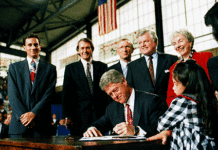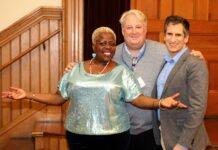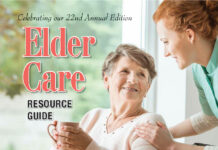By Mike Festa, State Director, AARP, Massachusetts

A new survey released by AARP Foundation, “Loneliness and Social Connections: A National Survey of Adults 45 and Older,” finds that 1 in 3 U.S. adults age 45 and older are lonely. While the percentage is unchanged from a previous loneliness study conducted by AARP Research in 2010, approximately five million more midlife and older adults are lonely due to growth in this age group among the population.
Over the past several years, both loneliness and isolation have emerged as public health issues that could have serious implications for quality of life and the U.S. economy if not properly addressed. Medicare spends an estimated $6.7 billion each year on socially isolated adults. The health risks of prolonged isolation are equivalent to smoking 15 cigarettes a day.
Although social isolation and loneliness are related, they are distinct and can occur independent of one another. Social isolation is objective, with measurable factors like the size of one’s social network, while loneliness is more personal and subjective — it’s how people perceive their experience and whether they feel they lack the connections, companionship or sense of belonging that humans need to thrive. Through this survey, the Foundation aimed to improve society’s understanding of loneliness and its relationship to the factors of social isolation.
Among other findings, the survey identified several risk factors and predictors of loneliness. Notably, populations at increased risk for chronic loneliness include people with low income (less than $25,000 per year), unpaid caregivers, and those who self-identify as LGBTQ (lesbian, gay, bisexual, transgender or queer).
Overall, the survey found that increased social connections can reduce social isolation and loneliness. In particular, it revealed a clear relationship between loneliness among midlife and older adults and their connections with their neighbors — which is a new area of focus in 2018. Thirty-three percent of midlife and older adults who have spoken to their neighbors are lonely, compared with 61 percent who have never spoken to a neighbor.
The study also measured the prevalence of loneliness across demographic groups and explored the relationship between loneliness and life experiences, social connections, health and technology.
Key findings include:
- Several populations, including unpaid caregivers, low-income individuals, and those who self-identify as LGBTQ, are at increased risk for chronic loneliness. AARP Massachusetts seeks to ease the burden of these groups by advocating for the CARE Act, Family Caregiver Tax credit, and being a part of the LGBTQ aging commission.
- The size of one’s social network and being physically isolated are the top predictors of loneliness, but depression, anxiety, overall health, and age are also contributing factors.
- The ways in which older adults cope with loneliness vary depending on how frequently they feel lonely. Chronically lonely adults are more likely to turn to isolated activities to cope, such as watching television or surfing the internet, while those who are not chronically lonely are more likely to talk with a friend or go out with family when feelings of loneliness do occur.
- Fewer than 20 percent of people have discussed feelings of loneliness with their health care provider.
To read the full report, visit: www.aarp.org/connections2018. Archives of articles from previous issues can be read at www.fiftyplusadvocate.com.












